2017 Rocky Mountain Slayer 770 MSL
(discontinued)
| Where To Buy | |||
|---|---|---|---|
Free shipping on orders over $50 (continental U.S. only).
International shipping available. Some exclusions apply. |
Free shipping on orders over $50 (continental U.S. only).
International shipping available. Some exclusions apply. $3,149.94
|
||
Free shipping on orders over $50 (continental U.S. only).
International shipping available. Some exclusions apply. |
|||
Free Delivery on purchases over £20.
|
|||

It's back! Following a short hiatus, Rocky Mountain introduced an all-new 2017 Slayer. The new breed sports a full carbon frame, 165mm of rear travel, unique blind pivots, and looks that could kill. Whether it's an enduro race, bike park laps with the crew, or getting your freeride on, the Slayer is designed to take no prisoners with its ultra-aggressive geometry and progressive suspension. With that in mind, we pointed it down the rowdiest bits of trail we could find in Tucson, Arizona during the 2017 Vital MTB Test Sessions.
Highlights
- Smoothwall carbon frame
- 27.5-inch wheels (26+ compatible)
- 165mm (6.5-inches) of rear wheel travel // 170mm (6.7-inches) fork travel
- Smoothlink suspension design with Metric shock and eyelet bearings
- Single-sided chainstay and seatstay pivots with Max type Enduro cartridge bearings
- Internal cable routing with Shimano Di2 compatibility
- Ride-4 geometry adjustment chip
- Tapered headtube
- 1X drivetrain specific
- Press fit 92mm bottom bracket shell with two lower ISCG05 mounts
- Boost 148mm rear spacing with 12mm through axle
- Measured weight (size medium, no pedals): 29.4-pounds (13.33kg)
- MSRP $5,799 USD

Taking cues from the Maiden downhill bike, at the heart of the frame rests an evolution of Rocky Mountain's four-bar Smoothlink suspension design. It's paired with a Metric-sized 230x65mm RockShox Super Deluxe RC3 shock. The upper shock mount contains two Max type Enduro cartridge bearings for improved sensitivity, utilizing an in-house design that provides the same benefit to any compatible shock. Similar Enduro cartridge bearings are used in all pivot locations, and the rocker link has a radially expanding Pipelock collet.
The frame itself is made with Rocky's Smoothwall carbon construction process, which uses "rigid internal molds instead of traditional air bladders" and "different types of carbon in specific frame areas to maximize stiffness and impact resistance while minimizing overall weight." The single-sided clevis pivots not only look awesome with their smooth carbon outer appearance, but also improve heal clearance on the Boost-equipped frame.
In conjunction with the Boost 148mm rear axle spacing, going to a 1X drivetrain specific design allowed Rocky to widen the lower pivot a substantial amount to improve frame stiffness and bearing life. Doing so meant they had to come up with their own chainguide, however, which rotates on the swingarm and can accommodate 30-36 tooth chainrings. The two lower ISCG05 mounts remain for bashguard use. Rocky chose to build the bike with a Press Fit BB92 bottom bracket.
|
|
|
|
The Slayer features full-length internal dropper post and optional lockout routing, internal brake routing in the front triangle, and internal tube-in-tube shift routing. Foam is wrapped around most housing inside the frame to help minimize rattling. A large port on the downtube makes the sometimes painful process of cable routing much easier. With an eye toward the future, this rig comes prepared with Shimano Di2 compatibility.
There's enough clearance for up to 27.5x2.5-inch Maxxis Wide Trail tires which come spec'd on the bike, and it's also compatible with 26+ tires up to 3.0-inches wide for those looking for more traction and tire volume. Mud clearance is decent with half a centimeter of room for the muck with the stock tire.
Other details include a tapered headtube, protective rubber guards on the chainstay and seatstay (nothing on the downtube), a water bottle mount in the front triangle, and 180mm rear brake post mounts.
You can choose from four builds ranging from $4,199 to $6,999 USD in two colors, or go frame only to spec your dream ride. We tested the $5,799 Slayer 770 MSL.
Geometry

Longer, lower, slacker. The new Slayer is all the things you've come to expect of a modern big mountain weapon. Rocky says, "The updated geometry retains a fairly steep seat-tube angle, while the reach has been extended and the head-tube angle has been slackened. We kept the bottom bracket drop neutral and the rear center quite short to improve cornering, and shortened the seat-tube lengths to make room for the next generation of longer dropper posts."
It features the Ride-4 geometry adjustment system, which uses a four-position flip chip in the lower shock mount to adjust the bottom bracket height up to 15mm and head angle up to 1.1-degrees.
At 5'8" and 5'10" (1.73 and 1.78m) tall, our testers chose a size medium with a comfortable reach of 422-434mm, 599-602mm effective top tube, snug 425-430mm chainstays, and an always-slack 64.8-65.9 degree head tube angle. We measured the bottom bracket height at 342mm with the Ride-4 adjuster in the upper left position when viewed from the driveside.
Suspension Analysis
Using the bike industry's leading linkage analysis software, André Santos, the Youtube suspension whiz, was able to determine a close approximation of the Slayer's kinematics for the purpose of this review. These charts provide great insight into several key factors that impact how it rides. Those unfamiliar with these types of graphs should watch André's excellent series of suspension fundamentals videos. The results of his analysis are as follows:
|
|
|
|
Observations:
- The Slayer is a very progressive enduro bike at 53%.
- Pedaling efficiency is good with anti-squat values at sag close to 100% in all cogs for a 32-tooth chainring. However the anti-squat values are not stable/constant at the pedaling zone.
- Given the significant decrease of anti-squat values along the travel, the total pedal kickback is relatively low compared to many enduro bikes.
- Anti-rise of 30% at sag, meaning that the suspension is very isolated from braking forces. The disadvantage of such a low anti-rise is that the rear end of the bike will slightly rise under rear braking (since rider weight transfers forward upon braking, unloading the rear suspension).
- Overall, the Slayer is a very progressive enduro bike with good pedaling efficiency and remains very neutral to braking forces.
How does science meet the dirt? Did our real life ride time confirm the analysis? It's back to Vital's testers to hear how the new Slayer performed on trail.
On The Trail
Following an initial test ride in Whistler, BC, we headed to Tucson, Arizona's Mount Lemmon to experience the Slayer on a different flavor of trail. Tucson rides included slip-sliding through snowy roots on Aspen Draw, turning up the speed on Bigelow, dicing turns on Bug Springs, and full-on rock smashing on La Milagrosa.
From size small to XL, Rocky tailors things for the average size rider of each size of bike. This means every size receives its own shock tune, with shorter riders getting lighter compression and rebound tunes combined with fewer volume spacers inside the shock. Our size medium included one Bottomless Token in both the shock and 170mm RockShox Lyrik RCT3 fork. Per Rocky's suggestion, rear sag was initially set to 30%. The fork was set to the recommended pressure for a rider slightly heavier than our 175-pound (79.4kg) testers with ~7 clicks of low-speed compression.
The handlebars were trimmed to 770mm or swapped with a comparable setup down from the stock 800mm width with the addition of Rocky's lock-on grips. We were pleased to see a short 40mm Rocky Mountain AM stem in place, matching the bike's demeanor.

This is a bike that we wanted to love – there's an incredible amount of promise in the numbers, components, and suspension design. On the trail, however, we struggled to quickly find our groove. In both Whistler and Tucson it was a battle to find the perfect combination of the Ride-4 geometry position, suspension settings, and component adjustments. In the slackest geometry setting, which is where we typically run most bikes, we found the bike to be too slack for the trails we were riding after noting difficulty weighting the front end and pushing occurring both uphill and downhill. Decreasing the fork's rebound speed helped, but the issue persisted and ultimately took one of our testers to the ground.
In the slackest geometry setting, which is where we typically run most bikes, we found the bike to be too slack for the trails we were riding after noting difficulty weighting the front end and pushing occurring both uphill and downhill.
Knowing there was potential for improvement, we began to experiment with the different Ride-4 settings. Making the switch is very easy and takes just a minute to do, even on the side of the trail. In the two steepest settings cornering became a bit more natural, uphill performance improved as the front end no longer lifted off the ground, and it pushed only on steep uphill pitches. In general, the bike became more usable for a wider variety of terrain. That said, we appreciate the fact that it has a truly slack setting. The slackest setting may prove useful if you find yourself in a very steep bike park or running shuttle laps on downhill-bike-worthy terrain. Adjustments to the Ride-4 system have a minimal impact on the suspension performance, though there are slight detectable differences.



As time went on we discovered that the key to riding this bike well is to ride it like a downhill bike, regardless of the geometry setting. Confidence and stability is there when launching into straightaway sections. Where things get a little interesting is when the trail starts to zig and zag around rocks. It's just a bit tougher to control than other bikes with less of a precise feel. Any difficulty in steering can be overcome by leaning it over, however, and it works best when really pressing into the travel and making big, deliberate movements. The bike doesn't knife in when squaring off corners like many all-mountain/enduro bikes, so the leaning approach works well. Riders who tend to finesse their way down the trail will likely have difficulty using it to its full potential as those types of inputs don't yield much of a positive response.
Slowing down our timing and pushing through more travel resulted in the best jumping response, and the bike does well on big, gradual lips. Lofting the front end into the air for a manual requires you to keep your weight back and low while you keep pushing through the suspension.
Riders who tend to finesse their way down the trail will likely have difficulty using it to its full potential as those types of inputs don't yield much of a positive response.
Noting the ability of the rear suspension to handle successive impacts very well, we took to riding it over the back just a bit more. Things started to really click when we began ploughing through the chunk and letting the bike take the hits. Once you're into the travel it's very good, and really pushing against the terrain yields the best response. "If I lean back it can take it," remarked one of our testers. "If I'm strong enough to hold onto it, well then there's not an excuse." Speeds took off in continuously rough sections and we never felt a harsh bottom-out. Traction was also great in off-camber chatter scenarios.
The Slayer does seem more limiting in terms of the trails you can ride and really enjoy than most enduro bikes. In Tucson, only on lower La Milagrosa trail – a wide-open chunk fest with a decent pitch, and perhaps the rowdiest sections of all – did the bike perform exceptionally well.
Early on we were having a little bit of a hard time tuning out some of the harshness in the rear end. Turns out the torque on the upper shock mounting bolt can have a large impact on how the bike rides. Ours showed up very snug, drastically reducing the effectiveness of the bearings in the shock mount. Backing it off a bit greatly improved small bump performance.
The progressive suspension design feels more linear than we'd expect on flatter terrain, making us wish we had a low-speed adjustment to help the bike come more alive. The middle setting on the Super Deluxe isn't as consistent as normal low-speed damping, instead providing a bit of a platform for pedaling. Stepping up to the more expensive Slayer 790 MSL build or frame provides this opportunity with a FOX Float X2 rear shock. As is, the bike provides a lot of type-two fun by allowing you to charge into the rough bits with a promise not to do you wrong.
If I lean back it can take it. If I'm strong enough to hold onto it, well then there's not an excuse.
Increased anti-squat values help the new Slayer pedal better than its predecessor, and you're met with a nice pedal response when sprinting. The sizable tires and 29.4-pound (13.33kg) complete weight aren't very noticeable in this scenario and it's not a chore to give it some gas.
Pointed uphill, the seat angle provides a nice upright pedaling position. Rocky did a good job of making a long-travel bike climbable, and spinning up gradual climbs is only a matter of overcoming rolling resistance. Steep climbs, technical punches, and tight uphill switchbacks are another story, however, as the slack head angle requires you to get over the front so it doesn't wander too much. Deep compressions followed by quick uphills are also an area where it struggles.
Build Kit
Looking over the available builds, it's clear that Rocky prioritizes sensible components that match the bike's intentions well. These include Maxxis Wide Trail tires, good suspension, stout forks, long-travel dropper posts, and powerful brakes.
|
|
|
|
The 770 MSL build includes a 170mm travel RockShox Lyrik RCT3 SoloAir fork. Well-known for its supple feel and stiff chassis, this fork pairs nicely with the bike and Super Deluxe RC3 shock. It tends to ride a bit lower in the travel to help achieve that plush downhill ride feel, and can be quickly tuned using Bottomless Tokens.
2.5-inch Maxxis Minion DHF Wide Trail tires add a lot to this ride, providing a very stable footing and tire profile when mounted to the 29mm internal width Stan's ZTR Flow MK3 rims. Classic Minion DHF performance plus added volume and good sidewall support is hard to beat. The tires held up to a ton of rock smashing, surviving several impacts that dented the rear rim in multiple locations.
As mentioned, the rear Stan's rim took a beating. Known for their ability to get you through a race run without a flat, the walls of the soft rims typically fold over before contributing to a pinch flat. Despite running reasonably high pressures for the terrain, on two occasions we had to bend the rim wall back to restore the tubeless seal. Shimano's XT Boost hubs detracted from the ride a bit with what felt like loose-ball bearing performance and a whirring noise typical of hubs from years gone by.
The Shimano XT disc brake and 180/203mm rotor combo worked very well with tons of quick power on tap. Some may find them to be a bit grabby in very loose terrain, but that's a compromise we'll happily live with. Shimano's Saint brakes come on the highest-end build, pointing once again to this bike's true calling. Ergonomics of the controls are hampered a bit by poor compatibility between the Shimano brakes and RockShox Reverb remote lever, though it's nice to see Shimano finally integrating their shifter and brake lever on the right-hand side.
|
|
Drivetrain wise, we were once again surprised to experience somewhat clunky shifts out of the Shimano XT setup. While most Shimano drivetrains are crisp and smooth, their new 11-46 tooth wide-range cassettes introduce some noticeable clunks when shifting under power. Range is good, however, with enough of a gear spread to make pedaling a big bike more tolerable. Riders looking to spend lots of time in a bike park or downhill setting may prefer a larger chainring over the stock 32-tooth Race Face Narrow/Wide on the Turbine Cinch crankset.
Though it's muffled, there is a bit of rattling from the inner cable and brake housing.
Long Term Durability
Aside from questionable rim durability, the only other concern we experienced was creaking from the Race Face Cinch BB92 Press Fit bottom bracket. After just two rides, one with a little bit of snow, the creak appeared and was only getting worse with more ride time. A downtube guard could be a smart addition for those looking to keep their ride in primo condition.
Rocky sells replacement pivot bearings, complete rebuild kits, and tools direct through their website, making linkage maintenance relatively painless. The frame is backed by a five year limited warranty with a six month to one year restriction on pivots, bushings, and hardware.

What's The Bottom Line?
Just as Rocky Mountain advertises it, the Slayer is best suited to "the most aggressive Enduro World Series tracks, bike park laps, and big mountain lines." The rider looking to crush the bike park and pedal uphill occasionally will find it the most rewarding, as opposed to the alternative of just surviving the bike park and catering to more trails. While limited in applications and on the edge of usable for most terrain, the Slayer could be very good for specific (and very talented) people. Spin to the top, point it down the steepest pitches you can find, ride it like a downhill rig, lean it over, and really push into the bike for the most rewarding experience.
Visit www.bikes.com for more details.
Vital MTB Rating
- Climbing: 3.0 stars - Good
- Descending: 4.0 stars - Excellent
- Fun Factor: 4.5 stars - Outstanding
- Value: 3.5 stars - Very Good
- Overall Impression: 4.0 stars - Excellent
Bonus Gallery: 28 photos of the 2017 Rocky Mountain Slayer up close and in action
About The Reviewers
Steve Wentz - Age: 32 // Years Riding MTB: 20 // Height: 5'8" (1.73m) // Weight: 178-pounds (80.7kg)
"Despite what it looks like, I'm really precise and calculated, which I'm trying to get away from. I'm trying to drop my heels more and just let it go." Steve is able to set up a bike close to perfectly within minutes, ride at close to 100% on new trails and replicate what he did that first time over and over. He's been racing Pro DH for 14+ years including World Cups, routinely tests out prototype products, and can squish a bike harder than anyone else we know. Today he builds some of the best trails in the world.
Brandon Turman - Age: 30 // Years Riding MTB: 16 // Height: 5'10" (1.78m) // Weight: 175-pounds (79.4kg)
"My current riding joys include pulling up hard and hucking test bikes into poor landings and techy sections with reckless abandon, then seeing how they react upon landing." Formerly a Mechanical Engineer and Pro downhill racer, Brandon brings a unique perspective to the testing game as Vital MTB's resident product guy. He has on-trail familiarity with nearly every new innovation in our sport from the past several years and a really good feel for what’s what.

About Test Sessions
For five years a dedicated crew of Vital MTB testers have been bringing you the most honest, unbiased reviews you'll find anywhere. This time around we rode 2017's most exciting trail, all-mountain, and enduro bikes on a wide variety of rowdy trails in Tucson, Arizona. Reviews can be accessed 24/7 in our Product Guide.Test Sessions was made possible with the help of Arizona Cyclist. Tester gear provided by Troy Lee Designs, Specialized, Five Ten, ZOIC, Sombrio, Race Face, and EVOC. All photos by Lear Miller.
Specifications
| Where To Buy | |||
|---|---|---|---|
Free shipping on orders over $50 (continental U.S. only).
International shipping available. Some exclusions apply. |
Free shipping on orders over $50 (continental U.S. only).
International shipping available. Some exclusions apply. $3,149.94
|
||
Free shipping on orders over $50 (continental U.S. only).
International shipping available. Some exclusions apply. |
|||
Free Delivery on purchases over £20.
|
|||







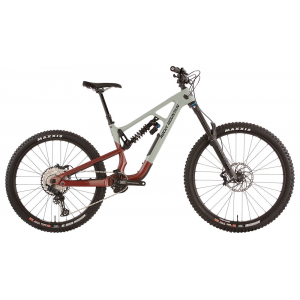

















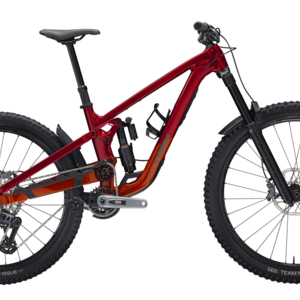


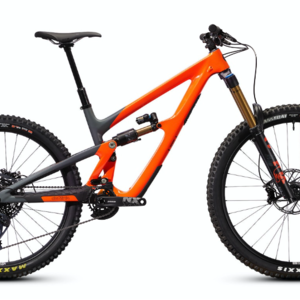
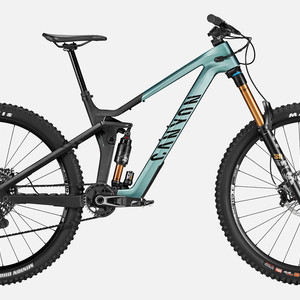
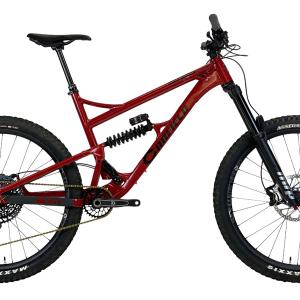







9 comments
Post a reply to: Review - 2017 Rocky Mountain Slayer from Vital MTB Test Sessions